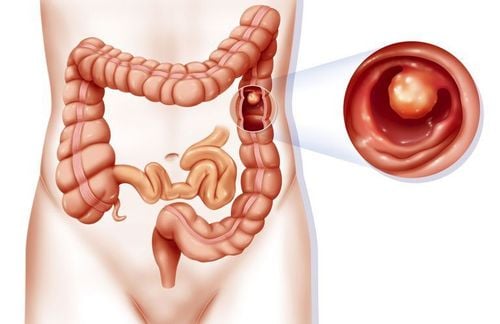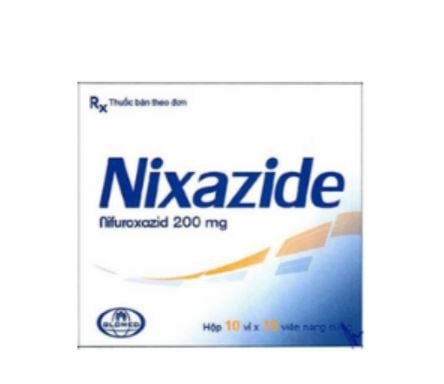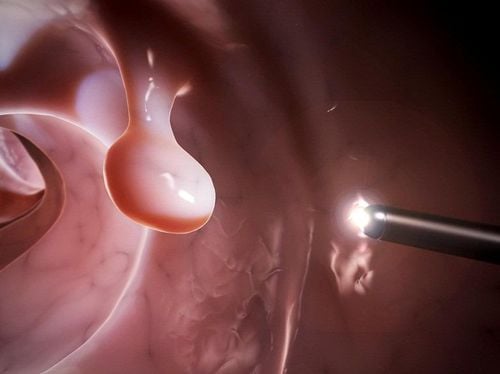This is an automatically translated article.
Posted by Dr. Do Minh Hung - Head of General Surgery Department, Vinmec Central Park International General Hospital.A polyp is a protrusion on the surface of the colon's epithelial lining. Colon polyps can be pedunculated or have broad legs. Histologically, colonic polyps can arise from either the epithelial layer (adenoma, hyperplastic polyp) or the stromal layer (hamartoma).
There are several types of colon polyps, including:
1. Polyps of the gland
About two-thirds of all polyps are adenomatous polyps with 90% measuring <1.5 cm.Polyps are divided into 3 types: tubular (tubular - can be found in any segment of the colon and have stalks), villi (vilous - mainly in the rectum and without stalks, with a risk of malignancy) highest) and tubulovilous glands.
Only a small percentage of them actually become cancerous. However, nearly all malignant polyps are adenomatous polyps. The risk of malignancy depends on size (>2cm) and villi composition.
2. Serrated Polyps
Depending on its size and location in the colon, serrated polyps can become cancerous.Small, sessile, round, serrated polyps, usually < 5 mm, found in the terminal colon and rectum, also called hyperplastic polyps, rarely malignant.
Large serrated polyps - usually flat (sessile), difficult to detect and located in the first part of the colon - are precancerous.
3. Inflammatory Polyps
This form of polyp may follow a bout of ulcerative colitis, Crohn's disease. Having ulcerative colitis, Crohn's disease increases the overall risk of colon cancer although polyps themselves are not a significant threat.
Polyp viêm có thể xuất hiện sau một cơn viêm loét đại tràng
4. Hereditary Polyps
A rare disease in which people inherit a genetic mutation that causes colon polyps. If you have one of these genetic mutations, you have a higher risk of developing colorectal cancer. Screening and early detection can help prevent the growth and spread of these cancers. Genetic disorders that cause colon polyps include:Lynch syndrome: Also called hereditary nonpolyposis colorectal cancer (HNPCC). People with Lynch syndrome tend to develop relatively few colon polyps, but these polyps can quickly become malignant (5%). It is caused by a mutation in one of the 5 genes that correct for chromosomal pairing errors: MLH1, MSH2, MSH6, PMS1, PMS2.
Diagnostic criteria according to Amsterdam: at least 3 people in the pedigree have colon cancer, 1 person is direct in the other 2 people and at least 1 person has colon cancer < 50 years old.
Lynch syndrome is the most common form of hereditary colon cancer and is also associated with tumors of the breast, stomach, small intestine, urinary tract, and ovaries.
Familial adenomatous polyposis (FAP): A rare disease that causes hundreds or even thousands of polyps to develop in the lining of your large intestine starting in your teens. If polyps are left untreated, almost 100% develop colon cancer, usually before the age of 40. It is caused by mutations in the APC gene, which plays a role in inhibiting the formation of neoplastic tumors in the colon.
Diagnosis is based on: teratomas in the abdomen or posterior rectal area, hypertrophy of the retinal pigment epithelium, colonoscopy with polyps in the colon, stomach and duodenum. Genetic testing can help determine the risk of FAP.
Gardner syndrome: A variant of FAP causes polyps to develop throughout the large and small intestines. You can also get noncancerous tumors in other parts of your body, including your skin, bones, and abdomen.
MYH-associated polyposis (MAP): A disease similar to FAP that is caused by mutations in the MYH gene. People with MAP often develop adenomatous polyposis and colon cancer at a young age. Genetic testing can help determine MAP risk.
Peutz-Jeghers syndrome: The disease usually begins with freckles that develop all over the body, including the lips, gums, and feet. Then, noncancerous polyps (hamartomas) develop throughout the bowel. The age of onset of symptoms is 25. Caused by mutations in the STK11 gene.
These polyps can become malignant so people with them are at risk for colon cancer.
Serrated polyp syndrome : A disease that leads to multiple serrated glandular polyps in the first part of the colon. These polyps can become malignant.

Nếu bạn có một trong những đột biến di truyền, bạn có nguy cơ phát triển bệnh ung thư đại trực tràng cao hơn
This method has many advantages compared to both classic laparoscopic surgery and robotic surgery such as: less invasive, small incision, less pain, low risk of infection, thereby helping customers to lose less blood during surgery. technique, quick recovery; The cost is much lower than robotic surgery.
Patients will be consulted and treated with experienced endoscopic doctors and directly operated by Dr. Do Minh Hung - Head of General Surgery - Vinmec Central Park General Hospital. Dr. Hung has more than 25 years of experience in the field of General Surgery.
>>>> Customers can refer to information: Day surgery, outpatient surgery
To register for examination and treatment at Vinmec Central Park International General Hospital, please contact Contact Hotline: 0283 6221 166 or register online HERE













